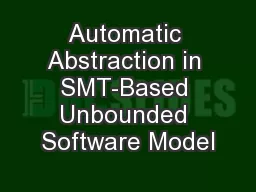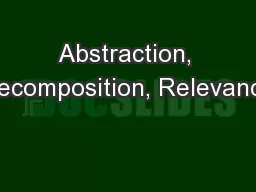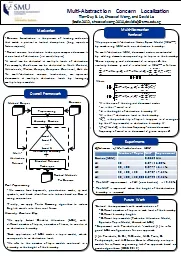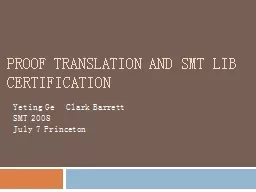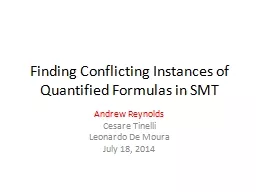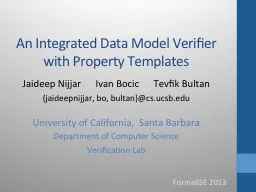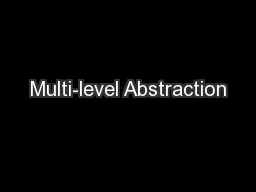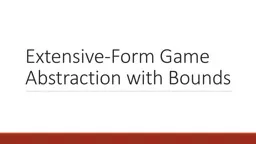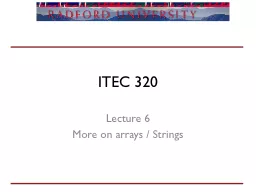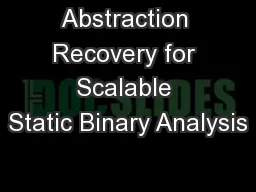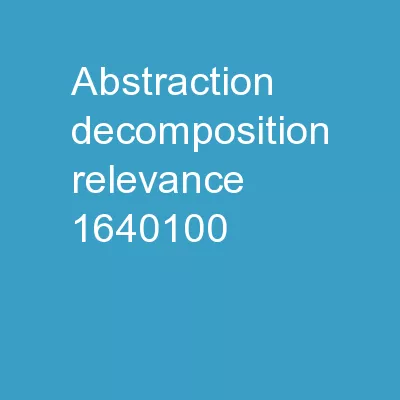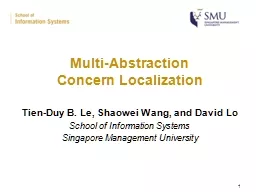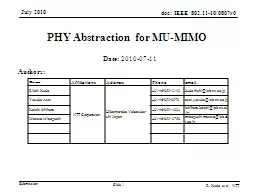PPT-Automatic Abstraction in SMT-Based Unbounded Software Model
Author : ellena-manuel | Published Date : 2017-09-03
Anvesh Komuravelli Carnegie Mellon University Joint work with Arie Gurfinkel Sagar Chaki and Edmund Clarke The Problem Program P Assertions Automatic analysis
Presentation Embed Code
Download Presentation
Download Presentation The PPT/PDF document "Automatic Abstraction in SMT-Based Unbou..." is the property of its rightful owner. Permission is granted to download and print the materials on this website for personal, non-commercial use only, and to display it on your personal computer provided you do not modify the materials and that you retain all copyright notices contained in the materials. By downloading content from our website, you accept the terms of this agreement.
Automatic Abstraction in SMT-Based Unbounded Software Model: Transcript
Download Rules Of Document
"Automatic Abstraction in SMT-Based Unbounded Software Model"The content belongs to its owner. You may download and print it for personal use, without modification, and keep all copyright notices. By downloading, you agree to these terms.
Related Documents

